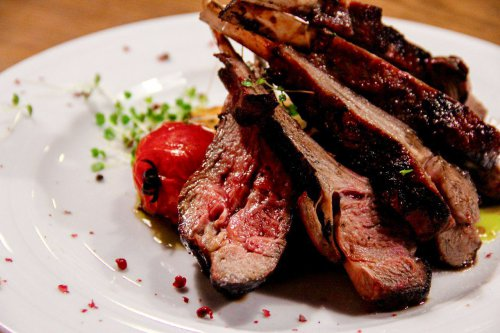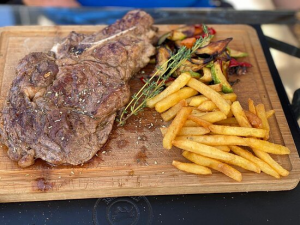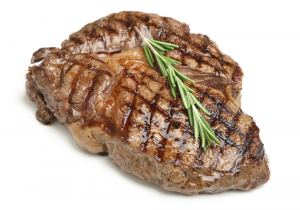
How to cook a steak
The bottom line is that when defrosting meat loses some of the juices.
And if it gets frozen on a hot frying pan, it instantly becomes covered with a crust that fixes the juice inside.
Marinate Only When Necessary
Do not marinate if you plan to cook a classic tenderloin or marbled meat steak – the same rib eye or filet mignon. Due to their softness and juiciness, they are good in their natural form – only with salt and pepper. The marinade, on the other hand, can interrupt the taste and add a certain viscosity to the steak.
Another thing is if you still decide to take a chance and cook an alternative steak. In this case, pickling is desirable, otherwise the meat at the exit will be too tough. There are many marinades, choose to your taste.

Dry the meat thoroughly
Before frying, pat the meat dry with a paper towel to remove any excess moisture from the surface. If you do not get rid of the liquid, the steak in the pan will cook rather than fry.
To remove moisture for sure, you can sprinkle raw meat with cornstarch.
And a way for perfectionists. Take a disposable foil form, pierce it in several places with wooden skewers (so that you get a kind of lattice inside the form) and put the meat wrapped in a paper napkin on this lattice. Let it sit in the refrigerator for about 24 hours. Perfect dryness of the surface is guaranteed.
However, if you have a wire rack, you can do without skewers.
Let the meat get a little weathered
Let it lie in the air for at least 20-30 minutes. During this time, the meat will be weathered around the edges and covered with a light crust, which, when frying, will keep the juice inside the piece.
Do not salt or pepper!
Of course, this recommendation again applies to classic premium steaks that are cooked without marinade. It is better to salt and pepper such meat after cooking.
If you add salt to the steak during the frying process, the meat juices will seep out. As a result, you will get a harder piece than you could.
Here we will make a remark: many neglect this recommendation, because they prefer just such a slightly harsh type of meat. Experiment. In this case, you can rely on your own taste sensations.
If we are talking about alternative steaks, then they should either be marinated, or salt and pepper and brushed with olive oil before frying.
What else to do before frying a steak
Choose the right pan
The ideal choice is a grill pan or a regular heavy-bottomed pan (cast iron would be nice). The thick bottom of the pan ensures that after heating it will keep the temperature at one level for a long time.
If the bottom of the pan is thin, it cools down quickly. This means that the meat is not fried, but rather boiled in its own juice.
Consider Your Oil Choice
Butter adds fat (softness) and flavor to the meat. Which one would you like? Some recommend frying in olive oil, adding a little cream towards the end.
However, if you are cooking rib eye or other marbled meat steak, additional fat content is not necessary. It’s up to you, but come to this moment consciously.
Another important point is the boiling point (smoke point) of the oil Smoke point.

If the fat smokes, it will give the steak an unpleasant taste. Therefore, it makes sense to choose vegetable oils for frying, boiling at an elevated temperature.
For example, unrefined sunflower and flaxseed oils are not suitable for cooking steaks. They begin to smoke already at 107 ° C, while the temperature of a well-heated pan is 150 ° C and higher. Extra virgin olive oil and unrefined peanut oil tolerate up to 160 °C. Creamy, coconut, unrefined sesame do not smoke up to 170 ° C.
Fine options are refined sunflower and avocado oil:
they begin to smoke after 200 ° C.
3. Get a thermal needle or learn to do without it
The degree of doneness of a steak is determined by the temperature inside the piece of meat. The easiest way to measure it is with a needle thermometer.
